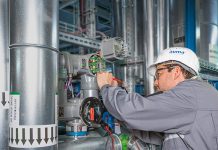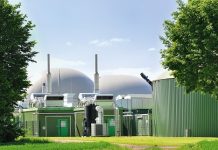A newly-patented submerged aerated filtration (SAF) configuration for wastewater treatment, which has been developed by Hampshire-based WPL, can cut energy use by 40% and be retrofitted into full-scale sewage works.
By altering the specific gravity, using a higher surface area biomedia and undertaking a hydraulic redesign of the SAF, WPL engineers have ensured that the media now moves slowly, removing the need for scouring. This also enables a reduction in process air as oxygen transfer is improved.
The latest research and development initiative is part of the company’s drive to look for ways to improve energy use, which could make it possible for WPL to halve the overall amount of energy used by its plants and bring through-life costs in line with those for rotating biological contactors (RBC). This is one of the first steps of a three-year programme to reduce power consumption.
WPL technical director Andrew Baird said: “Over the past three years the company has been looking at the way the media works inside the tank and the way this can be made more efficient. Implementing this latest research has enabled us to cut the energy taken to run our plants by between 35 and 40 %, which is a huge benefit for our customers.”
Due to the hydraulic redesign and alteration of the specific gravity of the media when coated with biomass, the media sinks to the bottom of the SAF tank, where the process air is introduced. The air cleans off the biomass enabling the media to rise again, carrying sloughed off sludge with it.
Trials at Cranfield University and with a major UK utility suggest that application of the new media, combined with the hydraulic design of the SAF, removes the need for regular scouring by preventing sludge build-up in the tank.
The self-cleaning media has a much larger specific surface area. This means the physical footprint of a traditionally configured biozone can be reduced by 33% – impacting on power consumption by the same percentage.
Andrew, who is also Convenor of British Water’s Package Treatment Plant Forum, said: “The key to the new process design is ensuring that the media moves slowly around the tank without the need for energy. When the media becomes coated with biomass it is naturally heavier so falls to the bottom of the tank where the process air from the diffusers clean off the biomass making the media float.
“The circulation within the tank prevents sludge build-up both in the tank and on the media, allowing a higher specific area to be used in highly BOD-loaded applications. This significantly reduces design parameters and directly reduces energy use.
“Unlike other technologies using submerged media, WPL’s SAF plant can be filled in varying ratios for specific applications up to 90% of the available volume whilst still maintaining performance. The system uses gravity rather than electrical energy to scour the media and bring solids that would normally settle in the biozone to the surface where a cross-current carries it forward in the process.”





